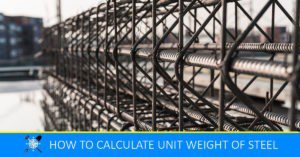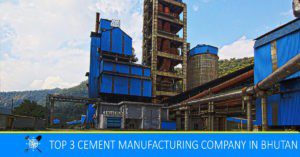Adobe wall construction is a traditional building technique that has been used for centuries in various parts of the world, including North Africa, the Middle East, and the American Southwest. This sustainable building method involves the use of sun-dried clay bricks, known as adobe, to create sturdy and energy-efficient walls that are well-suited for hot and arid climates.
Adobe walls offer numerous benefits, such as excellent thermal insulation, durability, and a unique aesthetic appeal. In this article, we will explore the history, construction process, and advantages of building with Adobe walls, as well as some tips for maintaining and repairing them. Whether you are considering building a new home or simply interested in learning more about sustainable building practices, this article will provide valuable insights into the fascinating world of Adobe wall construction.
What is An Adobe Wall?
An Adobe wall is a type of wall construction made primarily from Adobe bricks. Adobe is a type of building material made from a mixture of clay, sand, straw, and sometimes other organic materials. It is used all over the globe as one of the primitive building materials. Most adobe buildings are similar in appearance to cob and rammed earth buildings.
Adobe walls have been used for thousands of years in various parts of the world, particularly in arid and semi-arid regions where the climate is suitable for air-drying bricks. The word “adobe” itself comes from the Spanish language and has been adopted to refer to this traditional building material.
Adobe Block
Adobe blocks are earth block which is similar shapes to clay bricks as rectangular prisms. They are air-dried under the sun individually to prevent the formation of cracks. They particularly have no standard sizes. However, in some regions, it popularly ranges from 20cm by 10cm by 30cm which may weigh about 11kg per block. The larger size can weigh up to 45kg ( Wikipedia.org).
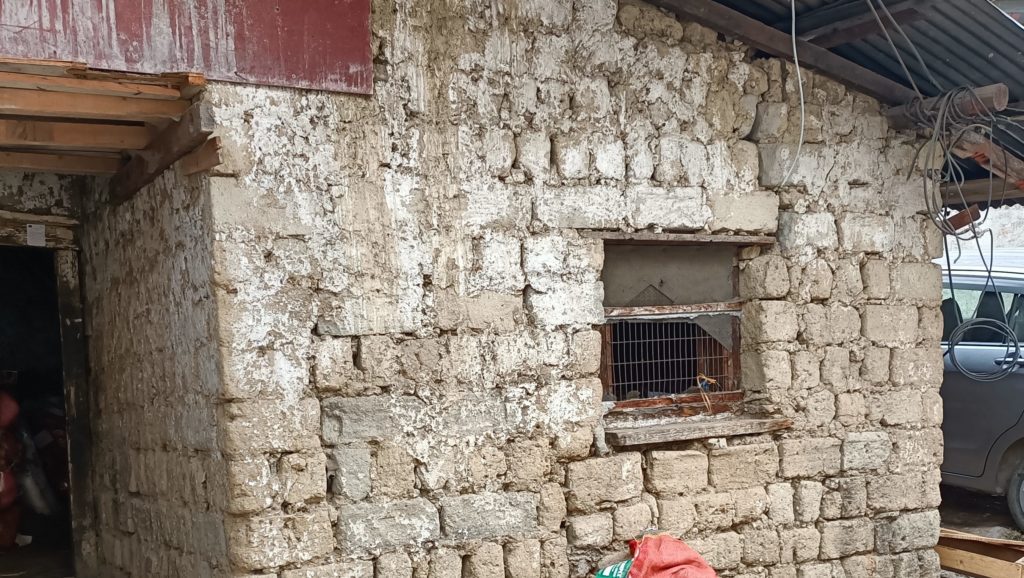
History of Adobe Wall
The use of adobe as a building material dates back thousands of years, with evidence of adobe structures found in ancient civilizations such as the Egyptians, Greeks, and Romans. Adobe walls were also popular in the Middle East, where they were used to build houses, mosques, and other structures.
In the Americas, adobe wall construction was a popular building technique among indigenous peoples long before the arrival of Europeans. Adobe structures were commonly found in the Southwest, where the dry and arid climate made adobe walls an ideal choice for insulation against extreme temperatures. Adobe was also used extensively in California during the Spanish colonial period, where it was used to construct churches, homes, and other buildings.
Use of Adobe Block Wall in Bhutan
Adobe block walls are not common in Bhutan compared to other infill materials such as rammed earth walls, stone masonry walls, brick walls and so on. However, adobe block walls are used for the construction of residential buildings and less important structures. For example, the kitchen, Pit latrine, external store and animal shad.
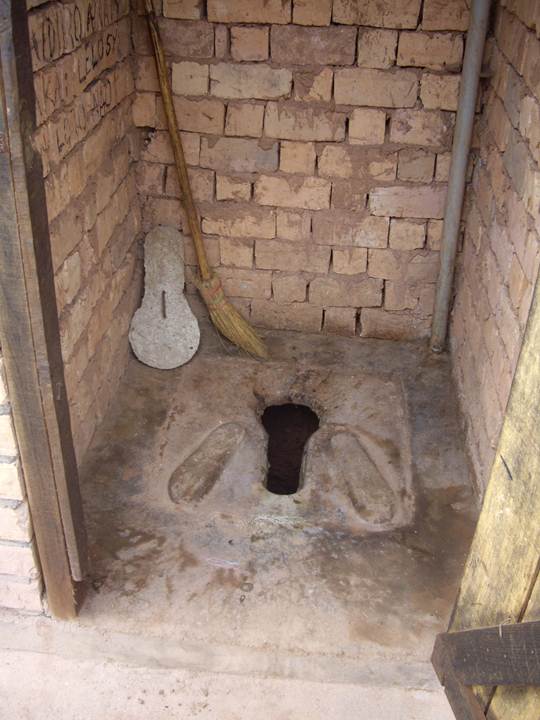
Rammed Earth Wall
Rammed earth walls are more common than adobe block walls in the country. However, both types of walls are susceptible to earthquake damage unless reinforced. Vertical cracks are visible in rammed earth walls before completion of construction if reinforcement is not provided.
Rammed earth walls are used for the construction of palaces, temples, monastery buildings, residential houses and animal sheds. They are also used for boundary walls. Due to their aesthetic looks, they are reinforced and used in the construction of eco-lodge and resort buildings.

Also, read: AAC Block (Autoclaved Aerated Concrete Block)
Stabilized Earth Blocks
This is the third type of earth block used in the country. A stabilized earth block is a mechanical compressed earth block which may or may not be stabilized by using a chemical binder. A chemical binder such as Portland cement is used and the blocks are called compressed stabilized earth blocks.
This type of block is used in single or double-storied buildings, common for residential houses.
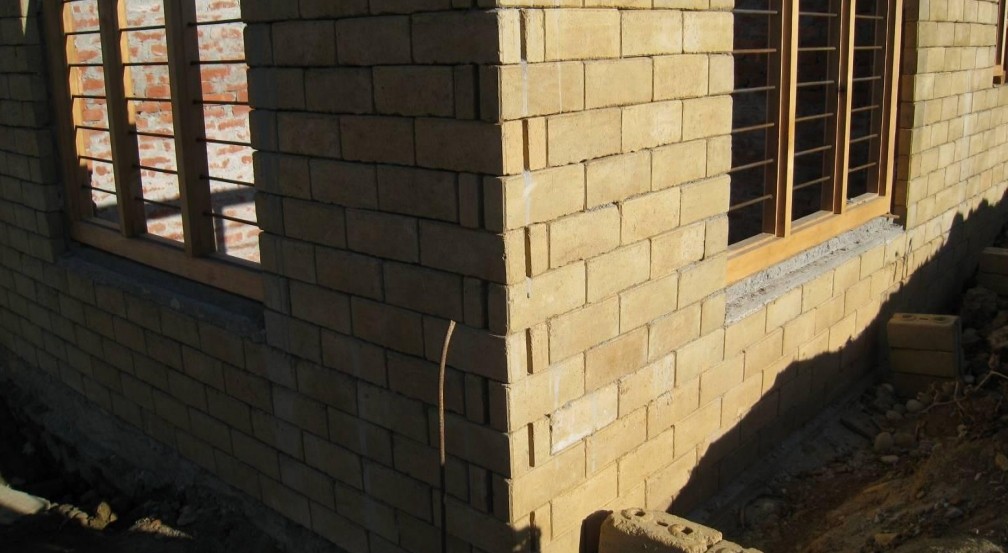
Also, read: Stabilized Mud Block: Properties, Advantages & Usage
Advantages of Adobe Walls
- Easy for sourcing out the materials
- The same materials or mud can be used for plastering and binding mortar.
- Very much economical
- Non-toxic materials
- Durable when maintained properly.
- The walls are very good-looking and impart a beautiful aesthetic to the surrounding
- Good fire resistance
- Environmental friendly materials due to the use of dirt or earth
Disadvantages of Adobe Walls
- Very slow process for construction
- Walls of this type are susceptible to earthquake damages
- Form cracks easily if unreinforced during the construction process due to the slow process of construction.
- The wall sections are very huge which makes the structure heavy and unstable for the untreated ground surface.
Also, read: Types of Bricks Used in Building Construction | 6 Types of Bricks
FAQs:
Q: What is the meaning of Adobe?
Ans: The word adobe is a Spanish translation for the mud block. The mud block was used for construction by the Spanish before the invention of clay blocks or bricks.
Q: What is the alternative to Adobe Bricks?
Ans: There are many alternatives to Adobe bricks these days which are laboratory-tested and found to be superior. Such as clay brick, concrete block, AAC block, etc. However, if you are looking for the same materials and similar texture with greater strength then stabilized earth blocks are the alternative to adobe blocks. Stabilized earth blocks are an improved form of traditional Adobe bricks.
References:
- Wikipedia contributors. (2023, October 22). Adobe. Wikipedia. https://en.wikipedia.org/wiki/Adobe
- Duffin, R. J., & Knowles, G. (1981). Temperature control of buildings by adobe wall design. Solar Energy, 27(3), 241–249. https://doi.org/10.1016/0038-092x(81)90125-0
![]()





